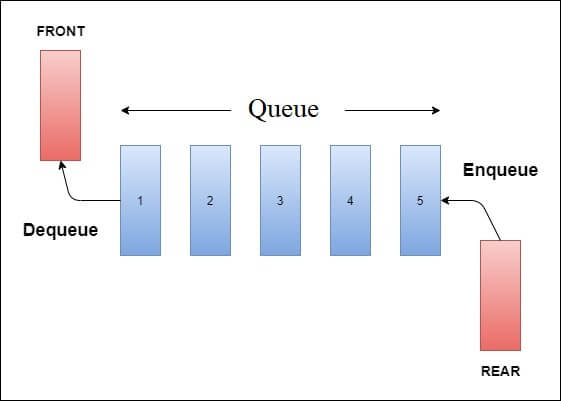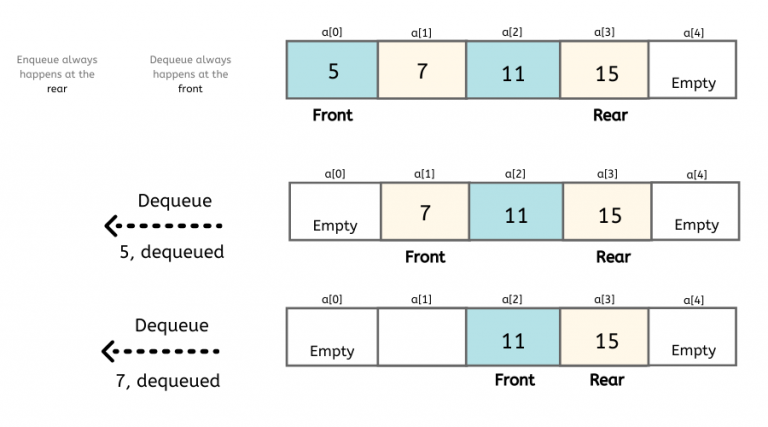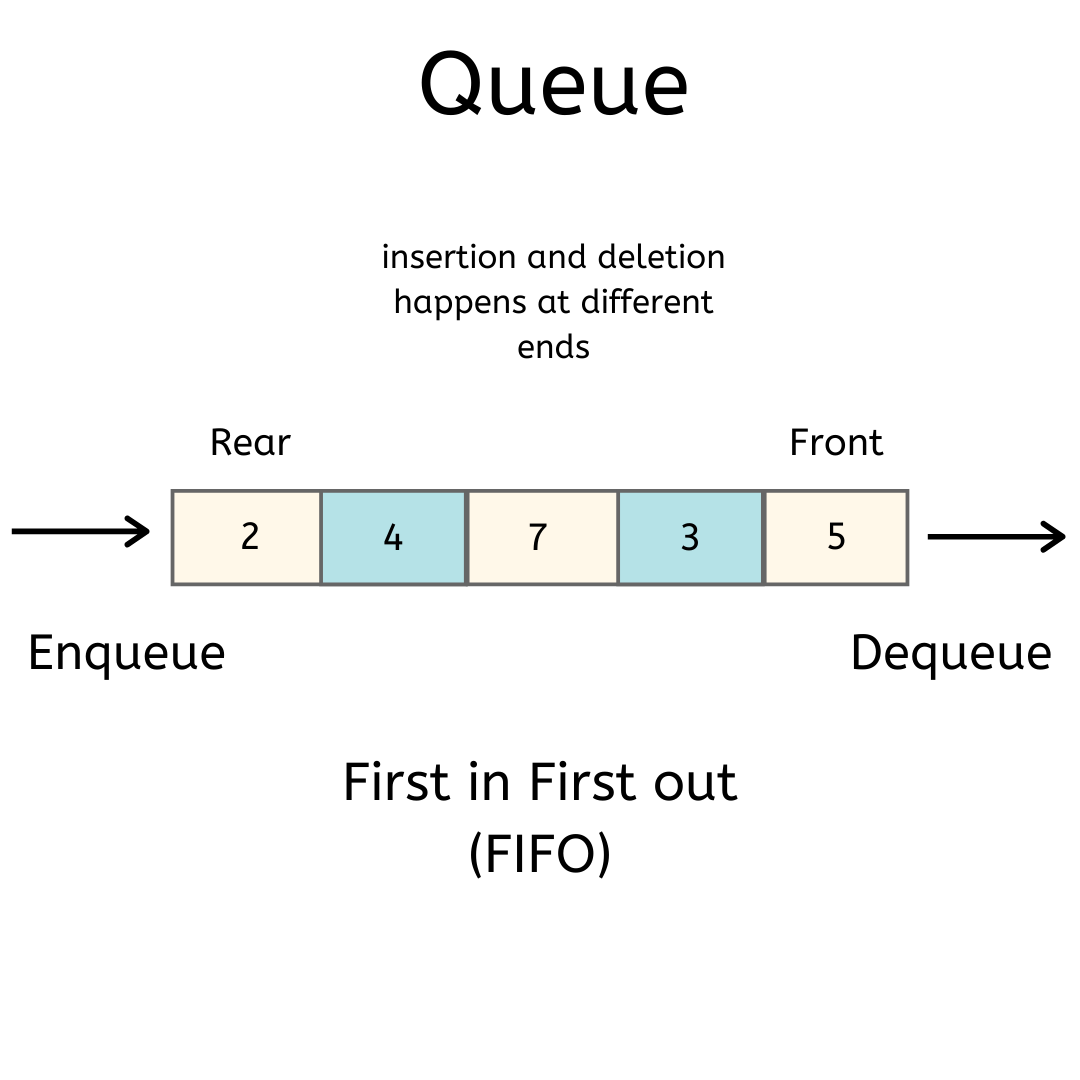

- #Queue data structure how to
- #Queue data structure movie
- #Queue data structure full
For production, consider using Queue available in JDK This program is for giving your overview of the data structure.
#Queue data structure how to
Let’s see how to implement a queue in Java. Linked List is a good option, but we need to keep in mind the overhead of link management and dynamic array. Array is the easiest one but doesn’t have the dynamic array properties.

We can use Array, Linked List or even the Stack. There are multiple way to implement a Queue in Java.
If queue is not empty, deque the element from front and increment the head. Show empty message/ underflow error if queue is empty. Add element to the tail and increase the size. #Queue data structure full
Show queue full message / overflow error to the application. Let’s look at some of the important operations of the Queue 1.2. Here is a visual representation of Queue data structure, and its operations for a better understanding.  IsEmpty: To check if the queue is empty. Peek: To get the front element without removing it. Dequeue: To remove an element from the front of the queue. Enqueue: To add an element at the rear of the queue. I define a Queue with a capacity and it will store max those many elements 1.1. Similarly, an element will be added at the rear of the Queue and deleted from the front of the Queue.
IsEmpty: To check if the queue is empty. Peek: To get the front element without removing it. Dequeue: To remove an element from the front of the queue. Enqueue: To add an element at the rear of the queue. I define a Queue with a capacity and it will store max those many elements 1.1. Similarly, an element will be added at the rear of the Queue and deleted from the front of the Queue. #Queue data structure movie
You can think of a queue of people for movie tickets as a Queue data structure the first person in the queue would get the ticket first and it would add any new person to the last. Queue Data StructureĪ stack is a FIFO (first-in-first-out) principle-based data structure it maintains two pointers “ FRONT” where the elements would be removed and “ REAR” where the elements would be inserted. We will dive into their visual representation and at last, we will see how to implement Queue in Java. We will go over the benefits and operations of the queue data structure.
Peek.In this article, we are going to understand Queue Data Structures. If empty it will display a message that the queue is still empty. This operation usually calls the is Empty function to ensure that the queue contains values or data that can be deleted. This operation is used to delete or clean all data in the queue. If the queue is full then the function returns true, otherwise, it will return false and the program can enqueue. This operation is usually made in a function so that every time this function is called it will return a value according to the condition. A queue can be said to be full if the back position pointer is equal to the maximum value of the queue. Because in the enqueue process (adding value to the queue) it is necessary to ensure that the enqueue is not full so that there is no overflow. This operation is used to check whether the queue is full or not. If the queue is empty, the function will return true, otherwise, it will return false. This operation is usually made in the form of a function so that every time this function is called it will return a value according to the condition. A queue can be said to be empty if the back position pointer is equal to 0. Because at the time of dequeue, it is necessary to ensure that the queue is still there / not empty so that underflow does not occur. This operation is used to check the condition of the queue whether it is empty or not. This operation is used to print or display all the data in the queue. Because the deletion is done on the element that is in the first order or index, then after the deletion it is necessary to shift each element after it. Elements in a queue can be dequeued as long as the queue is not empty, if it is empty, underflow can occur. This operation is used to remove the first element in the queue. Every time an enqueue occurs, the rear variable or the rear value indicator will be added by 1 (increment). The addition operation can be performed as long as the queue is not full. This operation is used to add an element to the end of the queue.







 0 kommentar(er)
0 kommentar(er)
